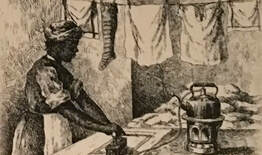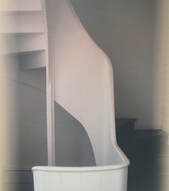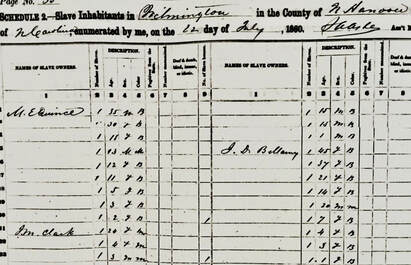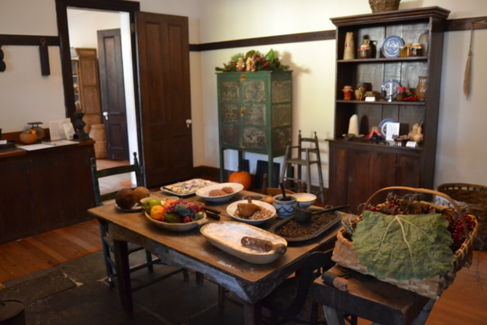|
When his father died in 1826, nine-year-old John D. Bellamy inherited 21 enslaved people. By 1860 he owned 115 in North Carolina, spread across three counties. He had 82 enslaved men, women, and children working at "Grovely," Bellamy’s produce plantation in Brunswick County. In Columbus County, there were 24 enslaved men between the ages of 17-40 who lived and worked at "Grist," Bellamy’s turpentine plantation. And in New Hanover County at the 503 Market Street townhome, nine domestic enslaved workers maintained the property and served the Bellamy family and their guests. The museum is fortunate to know their names and something of their lives.
The Bellamys moved into the home with their eight children, who ranged in age from a 19-year-old daughter, Belle, to 18-month-old Chesley. Primary care of the youngest Bellamy children was the responsibility of Joan, an enslaved wet nurse and nanny. Joan’s young daughter, Caroline, was described in a family memoir as matriarch Eliza Bellamy’s “little maid” who followed her “foot to foot.” She likely helped Mrs. Bellamy with her morning routine while Joan roused and tended to the Bellamy children. As coachman, Guy cared for the carriage as well as the horses. Each morning he prepared to drive Dr. Bellamy to his properties, or take Mrs. Bellamy and the children to visit friends or relatives. He ran errands in town and needed written permission from the Bellamys to legally purchase goods. Laws regulated where and when enslaved people could go, with whom they could do business, and with whom they could spend their leisure time. Wilmington’s slave owners nevertheless often disregarded the laws if it benefitted them.  Similar to the image of an enslaved worker shown at left, Rosella spent most of her 16-hour workdays as a laundress. She washed and dried linens and clothing for the Bellamys and their guests in the slave quarters’ laundry room. She was likely assisted by Mary Ann; together they ironed in a basement room in the mansion. The youngest enslaved girls likely helped carry laundry bundles and fold napkins.  The slaves used these exterior stairs to move between the mansion’s floors as their daily work required. The enslaved women and girls who were not preoccupied with the Bellamy children, meal preparations, or laundry spent their afternoons climbing the slave stairs as they cleaned, dusted, polished silver, and readied the mansion for guests. Guy served the evening meal, while Caroline used a “shoo fly” to ensure diners’ meals were insect free. They would then tend to the needs of the family and their guests after dinner in the parlors while Sarah tidied the kitchen and Mary Ann washed dishes. Joan put the Bellamy children to bed, and after all guests left for the night, the slaves retired to their bed chambers. Their workday ended around 10 o’clock, but they were on-call 24 hours a day. After a few hours’ slumber, the market house bell rang and another day began.
Source: Bellamy Mansion Museum Slave Quarters Exhibit.
2 Comments
Marilee Tremlett
2/2/2024 10:45:58 am
Love the new format with links. Such interesting background in this Wilmington treasure!
Reply
Researching Bellamy slave owners in marianna Florida
2/28/2024 03:32:32 pm
Need too know if any of there Decedent's is living today in Florida and other places
Reply
Leave a Reply. |
Older Blog Posts
To see all previous blog posts, please click here. Blogs written after summer 2020 will be found on this page. AuthorOur blogs are written by college interns, staff, and Bellamy volunteers. Archives
July 2024
Categories |
|
Ticket Sales
10:00 am - 4:00 pm daily
Monday-Friday 9:30 am- 5 pm |
Admission Prices (tax not reflected)
Self-guided
|




 RSS Feed
RSS Feed




